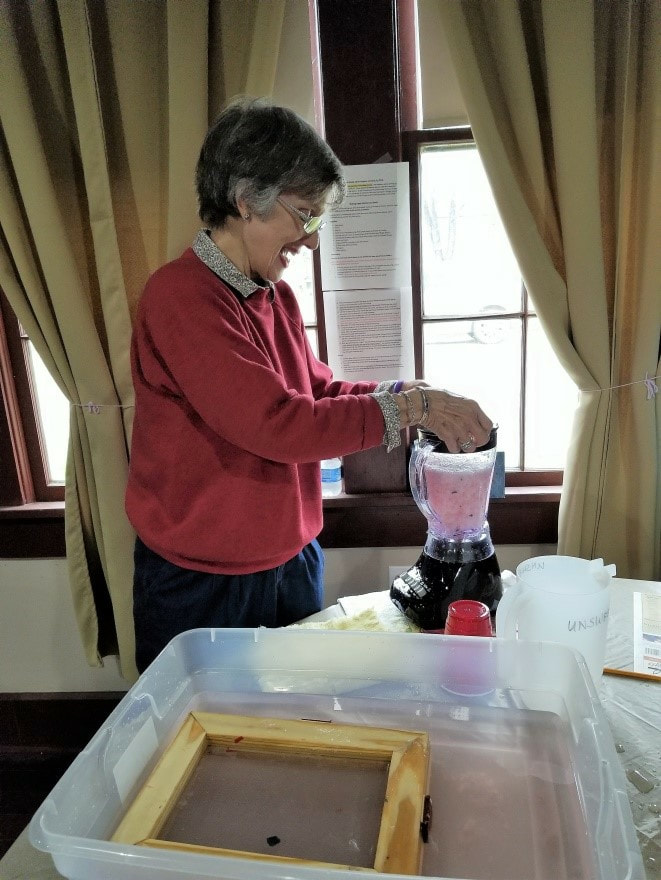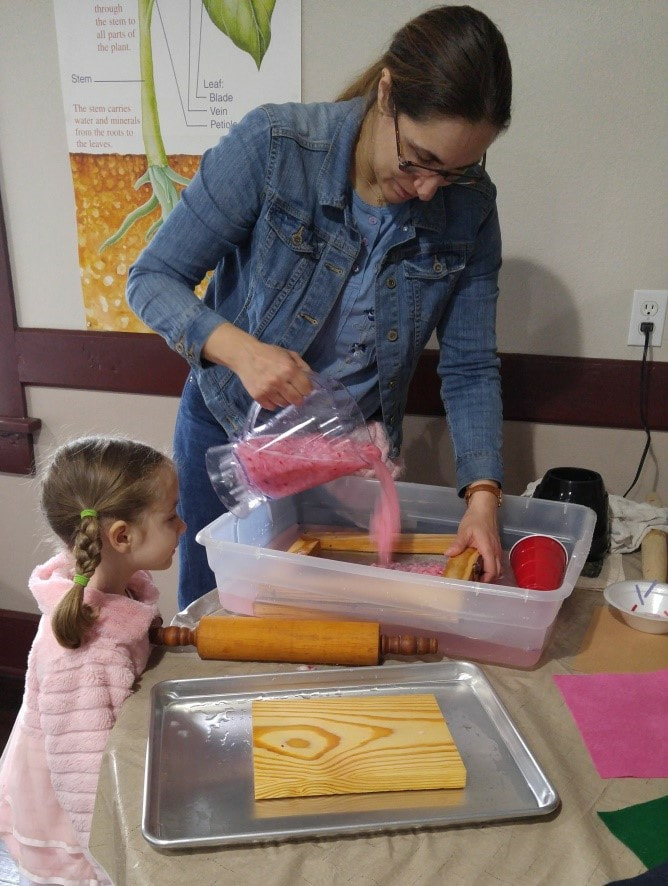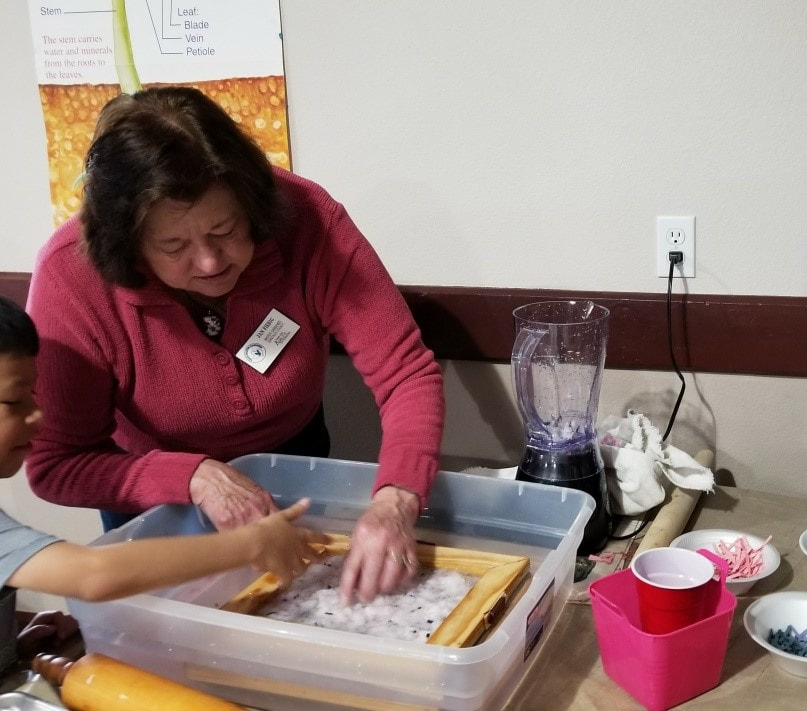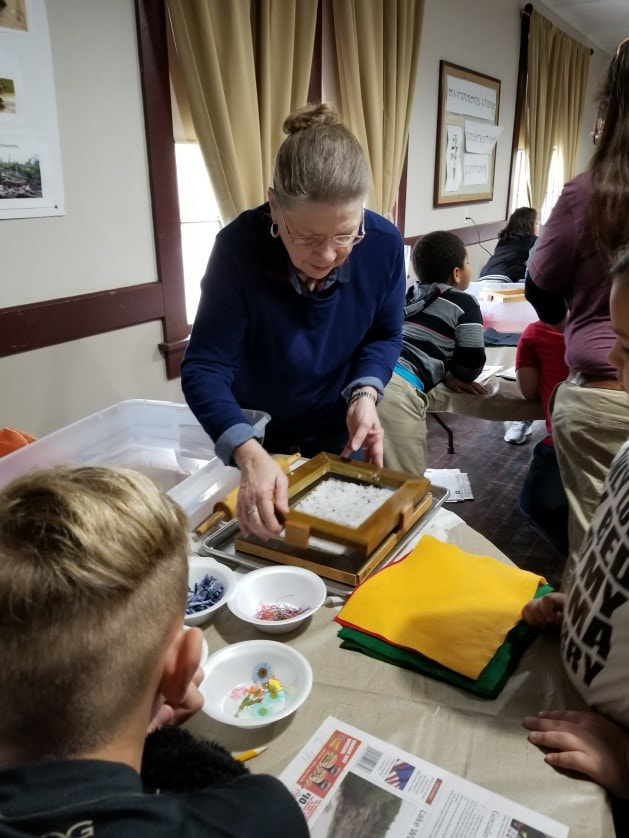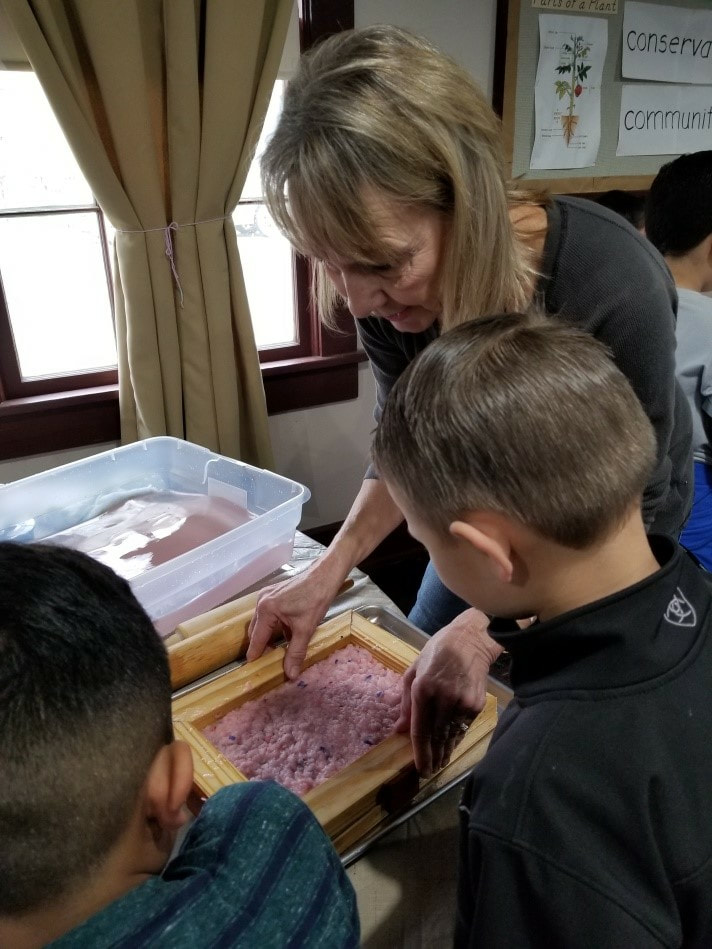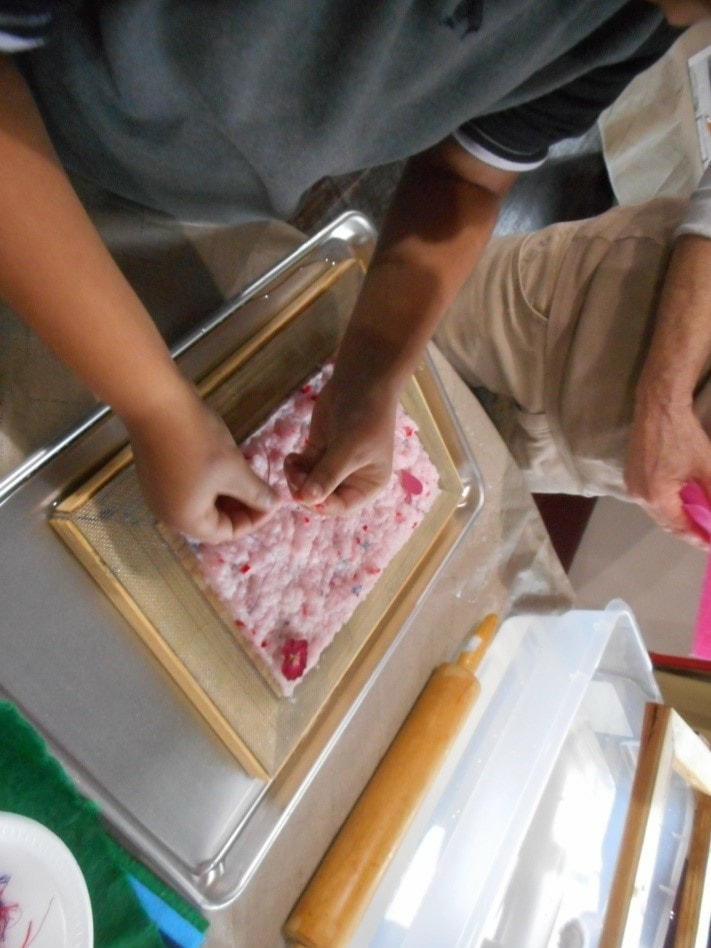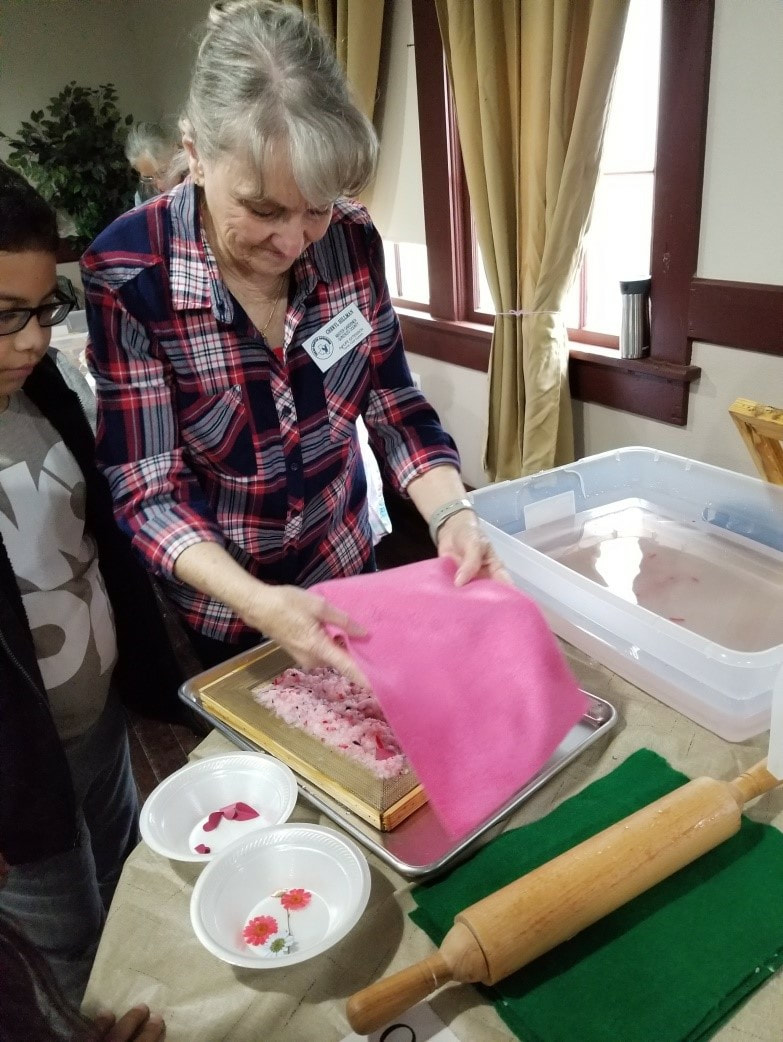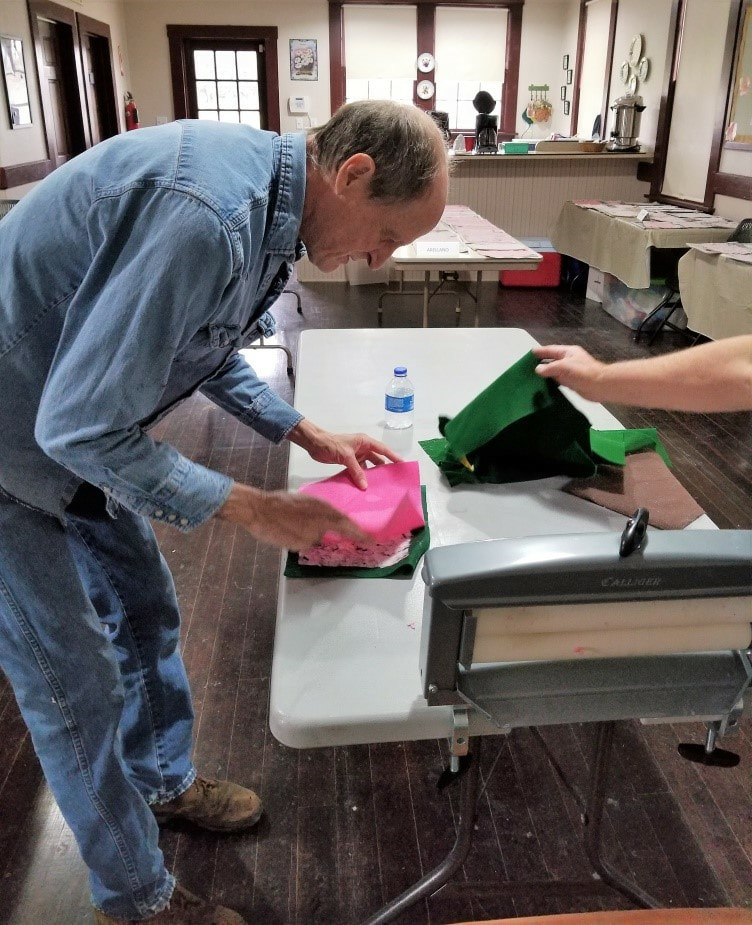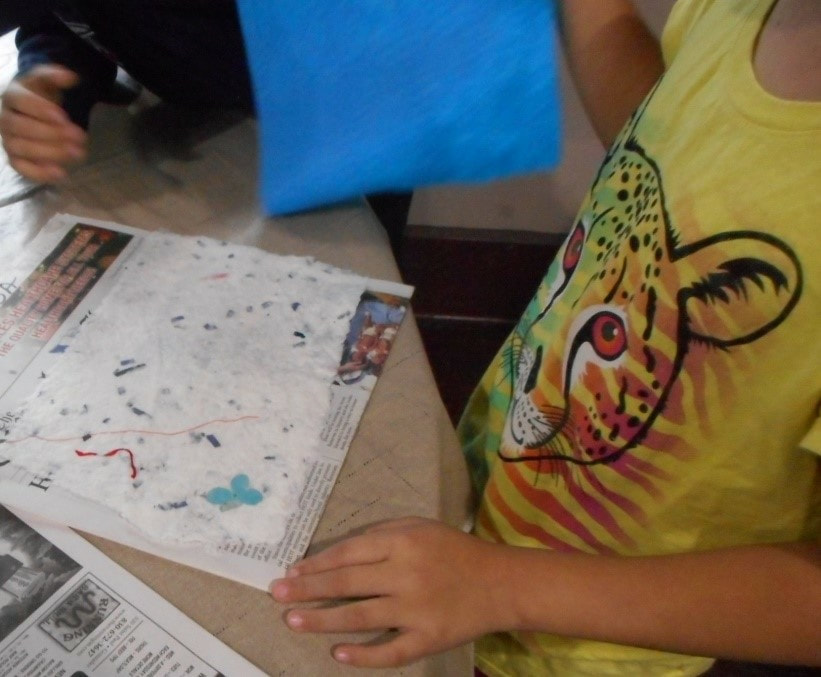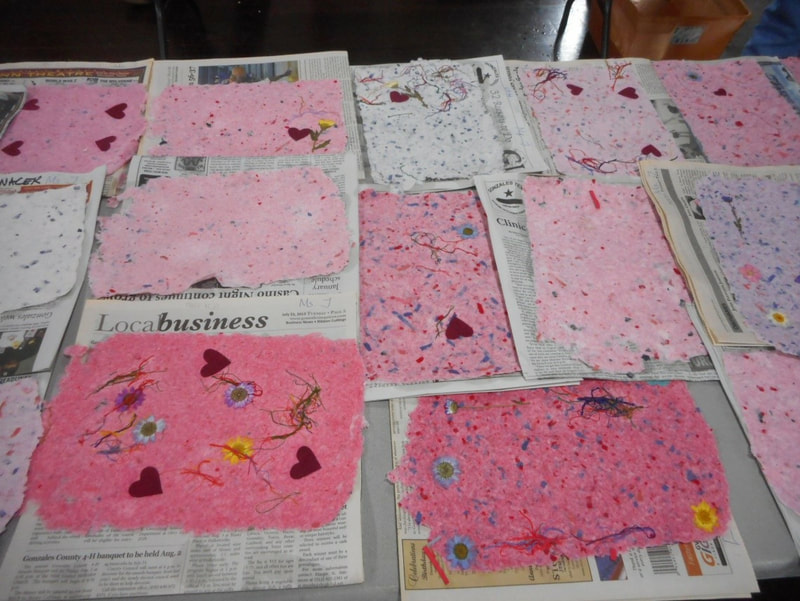With Valentine’s Day coming up on February 14, Master Gardeners worked with the second grade students from GISD on January 31, 2019 and demonstrated how paper is made. David DeMent explained that making paper has been around for several thousands of years. Without paper, we would not be able to learn how to read and write. The very excited group of students learned how to make card stock paper with a Valentine’s theme using torn up paper towels soaked in water, a screen frame, a rolling pin and a few decorations. Once the card papers are dried, the students create a valentine message and give the card to someone special in their lives.
|
We sure learned a lot about the roots and stems of plants and how food and water moves through the plant. We took a good look at some roots and saw how they branch out underground to take up water and nutrients. We learned that they hold the plant up in the ground. Then we looked at stems and learned that they hold up the leaves. By looking at celery stems that were dyed with food color, we saw the vessels that run throughout the plant to carry the water and nutrients. We broke our celery open and peeled the stalk back to see the vessels. We learned that the vessels in plants are called xylem and phloem.
We were back at the Master Gardener Building on Fair Street where we studied leaves. We formed our hypothesis about which part of the plant makes the food for the plant and then we read a great book together called Plants Make Their Own Food. We learned another big vocabulary word: photosynthesis. Then we did some experiments and we generated oxygen in a balloon and proved it really was oxygen by showing how the gas we had generated fed the flame of a candle. We generated carbon dioxide in a balloon and proved it really was carbon dioxide by using it to snuff out the flame on a candle.
Next time, we are going to study roots and stems and learn what their job is! We sure had a blast in our first session on the Parts of a Plant! We start with a program on the work scientists do and how they develop their hypothesis and conduct experiments to test their theories. We read a story together called I Want to Be Scientists and then we put what we had learned into practice by making a careful observation and drawing of the four parts of a plant: roots, stems, leaves and flowers. Next time, we will begin to learn about what the job of each part of the plant is.
We will be working with the 2nd Grade again this year to learn about the Parts of a Plant and what they do! We’re a little late being able to get our dates with the school but we’re delighted to say that we have our first two sessions scheduled. We will be learning all about the 4 parts of a plant in Session 1 and getting our hands dirty with our student scientists starting October 27. Then we will have Session 2 on December 2nd.
|
|
